If you think knowing SEO is the same as knowing International SEO, you’re in for some surprise.
As someone who runs an ad agency and first tried taking a brand global, I underestimated the maze of languages, cultures, and search preferences I’d encounter. Trust me, launching a website in France isn’t the same as launching one in the US. But with each stumble, I learned.
In this guide, you’ll get the lowdown on International SEO. I curated tested strategies and organized them in a checklist to make it easier for you to follow and apply.
Ready to start driving traffic to your site from the world stage?
Understanding International SEO & Its Impact On Your Business
Before jumping headfirst into the world of international search engine optimization, let’s first understand what it is. More than the definition, we’ll consider the challenges, benefits, and how it’s different from local SEO. Let’s get started.
Defining International SEO & Its Objective
The term sounds fancy but international SEO simply means taking your website to a global level. The process involves optimizing your website to target audiences in multiple countries or regions.
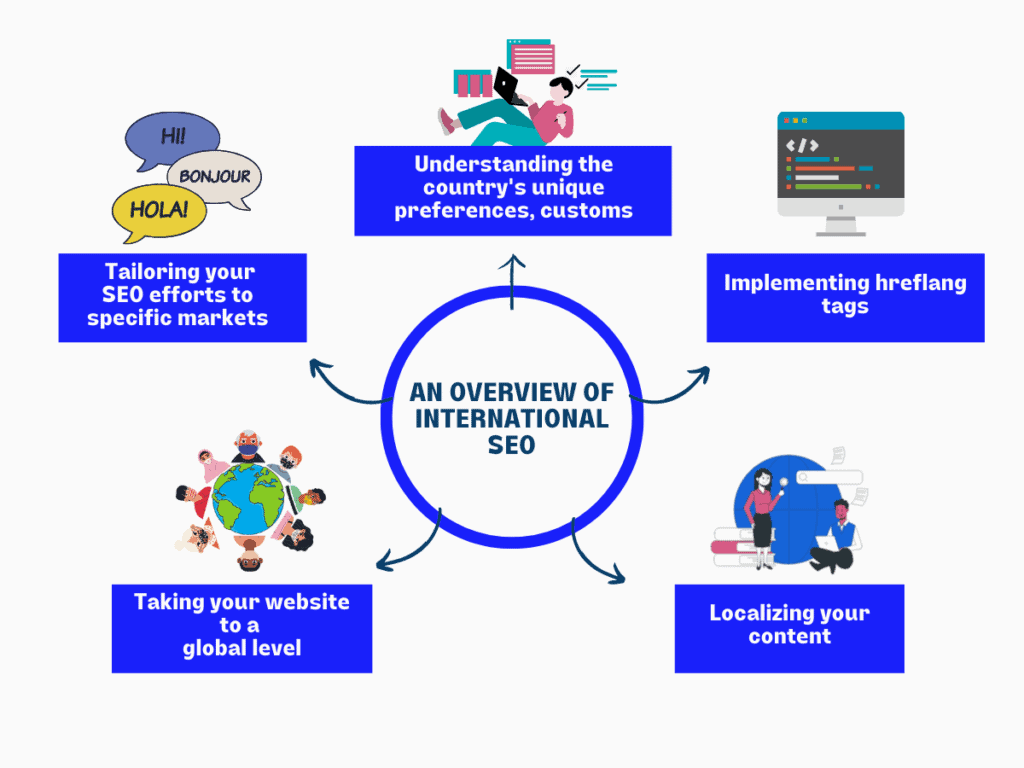
It’s like giving your website the stamp of approval to virtually travel the world and reach new audiences. But boosting your website’s visibility and traffic on the global stage is not easy. It involves tailoring your SEO efforts to specific markets, considering their language, culture, search behavior, and preferences.
So, what’s the goal of this type of search engine optimization?
The primary objective is for your website to shine in organic search results, no matter where your audience is. International SEO is about driving traffic and boosting your conversions on a global scale.
International SEO: How To Thrive Amidst Global Search Engine Dynamics
Expanding your business into international markets is not all sunshine and rainbows. You’ll encounter a few hurdles along the way and one of the biggest challenges is the language barrier.
Why?
Because your target countries could be in another language and translating your website alone won’t cut it. You will need to adapt your content and speak your audience’s language, literally and figuratively.
Let’s take a look at how Amazon does this. As you can see, Amazon gives its users the option to choose from 9 languages, depending on which one they’re most comfortable using.
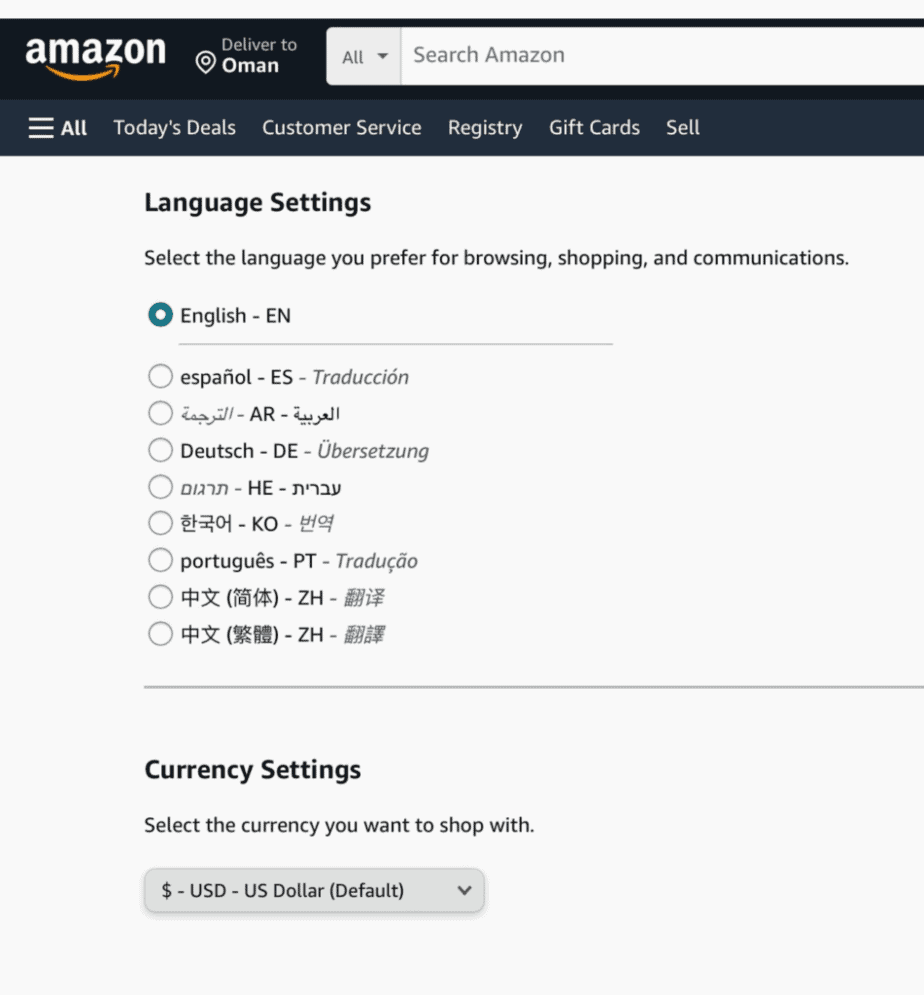
More than that, it also lets users choose the currency they want to use. This makes it convenient for those outside the United States to add their products to the cart without having to go through the conversion process separately.
What’s more, cultural differences will throw you a curveball. What works in one country might not resonate in another.
Just read about some of the biggest marketing blunders. Now, many of them survived the “yikes” moments, but if your business is not established yet, a simple blunder can put a dent in your world domination plans.
That’s why you have to get inside the minds of your intended audience and understand their unique preferences, customs, and even their sense of humor so you can create an authentic connection with them.
But it doesn’t end there. There’s also the battle with local search engines. Each country has its preferred search engines and you need to crack the code to get noticed.
To give you a push in the right direction, here’s a quick rundown of highly-populated countries and their preferred search engines:
| Countries | Preferred Search Engines |
| Worldwide | |
| United States | |
| Russia | Yandex |
| China | Baidu |
| South Korea | Google & Naver |
Don’t let these challenges discourage you. Overcoming these hurdles can unlock incredible opportunities.
Think about it: increased brand exposure, a new revenue stream, and an edge over your competitors in global markets.
But do you really have to learn and implement international SEO strategies? Why not just focus on local SEO? Let’s consider their differences so you’ll better understand why you need to leverage the former.
What’s The Difference Between Local & International SEO?
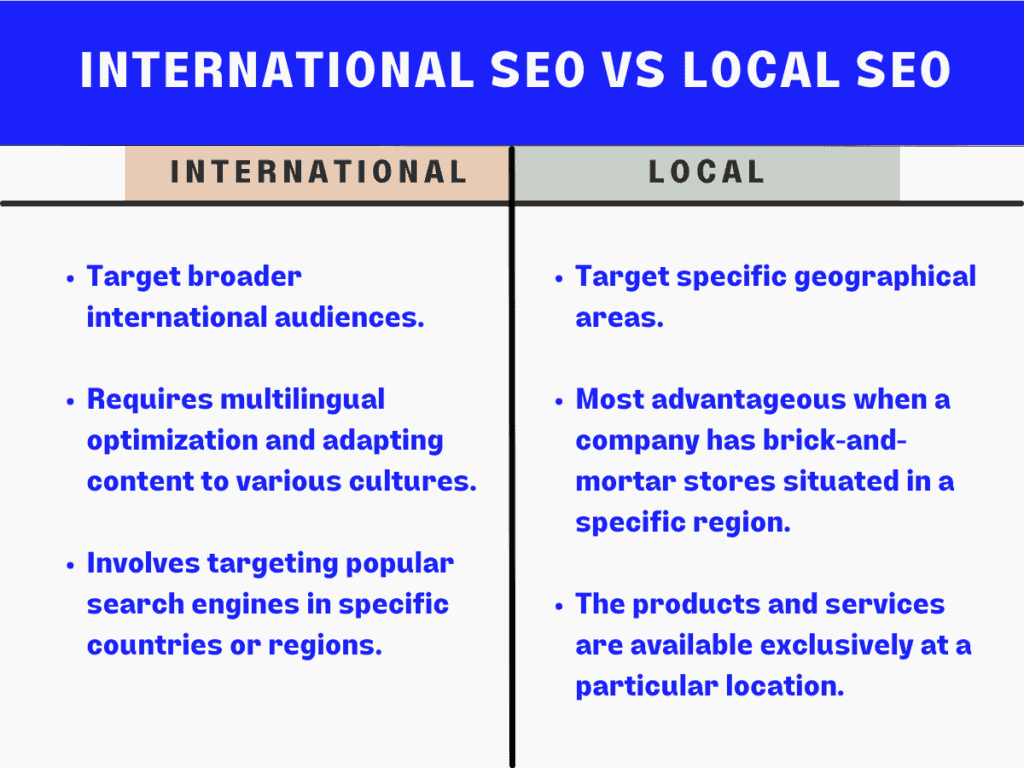
Local and international SEO differ in their focus and scope. Local SEO targets specific geographical areas to optimize your online presence for local search engine results.
On the contrary, international SEO expands your reach to different countries, aiming to rank well on search engines in various regions. That’s why it requires a more extensive and diverse optimization strategy.
When To Optimize For International SEO
Before you dive into the world of international SEO, let’s consider the signs that it’s time to go global:
A. Global Traffic
Spotting a surge in website visitors from overseas? That means there’s an international audience intrigued by your offer and is virtually crossing borders to reach you. Take it as a sign to welcome them into a website experience tailored to their language and culture.
B. Business Expansion
Crossing borders is always an exciting leap in every entrepreneur’s journey. Just as you’d familiarize yourself with local customs and languages, you’ll need to do the same for your website. You should tailor your digital presence to resonate with your new audience. Think of international SEO as your website’s golden ticket, granting it access to these fresh markets.
C. Search Queries
Noticing international search queries popping up for your brand or products? That means it’s time to take up international SEO and give these searchers a user experience crafted for their local needs. Adjusting your strategy accordingly opens the door that drives international growth and establishes a strong global presence.
Now that you have a better grasp of what international SEO is, it’s best to jump into the key components that surround it. In doing so, you’ll be better prepared about what to expect when implementing this.
5 Key Components Of International SEO You Need To Master
To conquer the digital landscape, knowing the key components of international SEO is your secret weapon. Master these, and you’ll unlock the door to diverse markets, reaching audiences in their native tongue and cultural context.
I. Website Localization
International SEO is about adapting your website to resonate with the local language, culture, and buying habits of your target market. This personal touch enhances user experience, making your audience feel seen and understood.
A localized website significantly boosts engagement because users are more likely to interact with content that feels familiar and relevant.
II. Cultural Sensitivity
Acknowledging and respecting the unique cultural norms and values of your target market fosters trust and rapport, making your audience feel valued and respected.
Not to mention, cultural sensitivity elevates your brand perception, positioning you as a globally aware and respectful entity. It’s the bridge that connects your brand to the hearts of your global audience.
III. Geo-Targeting
Delivering content tailored to users’ geographic locations ensures they find what’s most relevant and useful to them. This boosts engagement because users are more likely to interact with content that aligns with their local needs and interests.
Plus, it helps avoid mismatches. Would you serve up a winter clothing promotion to users in tropical climates? No, right? It just doesn’t fit.
IV. Local Search Optimization
When expanding to new regions, leverage local listings to make sure your business appears in searches specific to that region, enhancing visibility and credibility. It’s akin to setting up a local shop in a foreign country.
Optimizing for local search tells search engines and users that you’re in their neighborhood and speaking their language. This tailored approach not only boosts rankings in local search results but also fosters trust among the local audience, a vital step in global expansion.
V. Domain Strategy
Your domain is like your website’s address in the digital world, guiding both search engines and users to the right destination. For instance, a ccTLD like “.fr” signals a focus on French users, while a subdirectory like “/es” could indicate Spanish content.
This improves your website’s visibility and relevance for your target market, making it easier for them to find and engage with your content.
Now that we’ve explored the essentials, it’s time to chart your course through the world of international SEO. With these 4 key strategies, you’ll be ready to create a roadmap for your brand’s exciting journey across the vast digital borders.
4 Tested International SEO Strategies To Boost Your Website Ranking
Understanding the best strategies for international SEO equips you to optimize your website effectively, resonate with international audiences, and outshine competitors.
Not to mention, they’ll help you tackle international SEO challenges head-on, turning every effort into tangible results. Be on the lookout for specific tactics you can apply first to help you identify local search behavior and how to tailor your website to emphasize content relevance.
1. Search Term Research
A well-executed search term research strategy sets the foundation for successful international SEO. This lets you connect with your international audience and drive organic traffic to your website.
1.1. Understand The Regional Search Behavior & Language Preferences
Think beyond your borders and consider the different languages, cultures, and search habits.
Each country and age group has its unique way of searching for information, influenced by cultural and linguistic factors. Your international SEO efforts should reflect this diversity and understand their preferred methods of searching for brands.
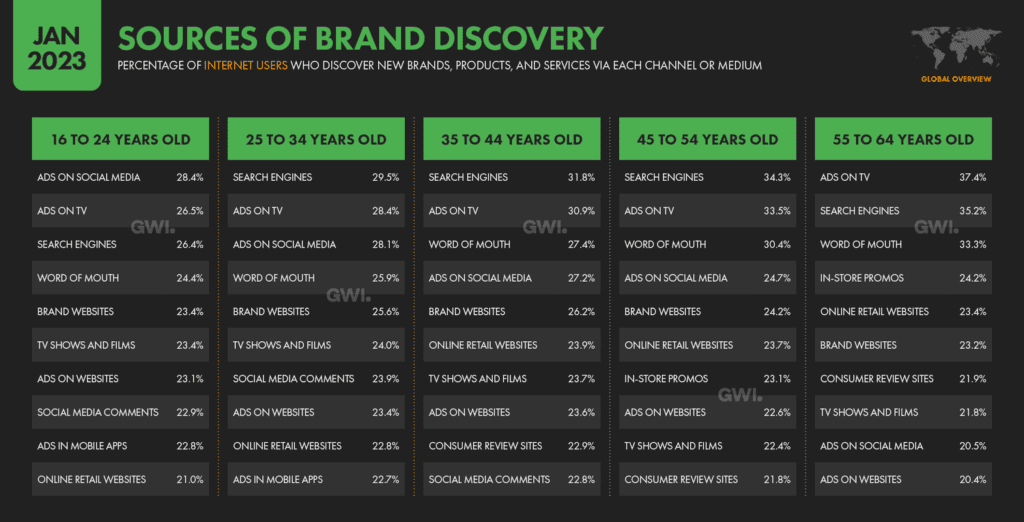
That’s why conducting thorough search term research is one of the things you should do to understand their search behavior.
It’ll give you valuable search term data to understand specific terms and phrases your intended audience in their native language uses. But it doesn’t stop there. You need to go beyond mere translation and understand the intent behind these search terms.
To help you further, here are techniques to guide you in understanding search behavior:
1.1.1 Monitor website analytics
Analyze the search terms that drive the most traffic and conversions, and identify patterns and trends to refine your strategy. You can use tools like Google Analytics to stay informed about user behavior, popular landing pages, and conversion rates.
As for the dashboard, it comes with a default version. However, the real catch with this is you can customize your dashboard based on the metrics you want to measure.
For example, to gauge if your content connects with your audience, examine metrics like Average Session Duration and Bounce Rate. These indicators reveal user engagement levels and whether visitors explore beyond the initial page.
If users typically stay for just a few seconds and quickly exit, it’s time to reassess your content to ensure it aligns with their search intent.
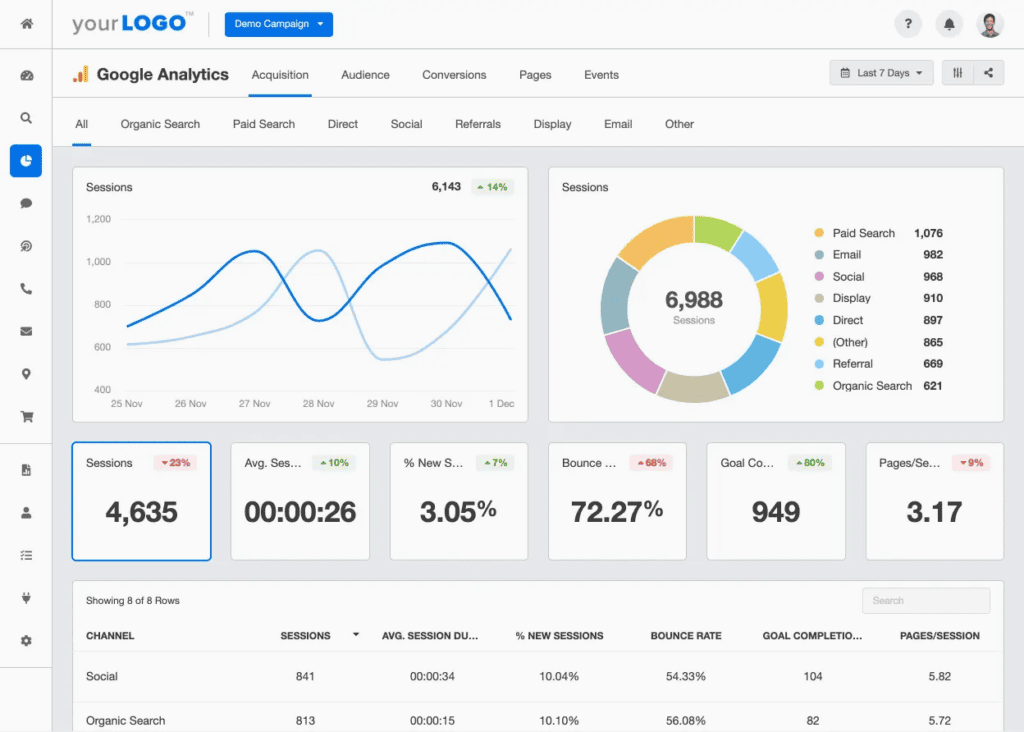
Aside from the crowd favorite, Google Analytics, leverage Google Search Console, Ahrefs, and Similarweb.
Here are their unique features:
- Ahrefs lets you see the best-performing pages of your competitors globally.
- Google Search Console has an index coverage report that displays the status of your indexed pages, helping identify and fix any issues.
- Similarweb has an “Audience Interests” feature, showing other websites your audience frequently visits.
Each of these tools is like a different lens, giving you a unique perspective on your websites. They help gather more data and let you compare to uncover hidden insights and craft the best strategies for our clients.
1.1.2 Utilize user intent analysis
If you don’t get what your target market wants when they search, you’re in the dark.
You should consider the intent behind search queries to recognize their needs and deliver the right content. Understand whether users are looking for information, or products, or seeking to take a specific action.
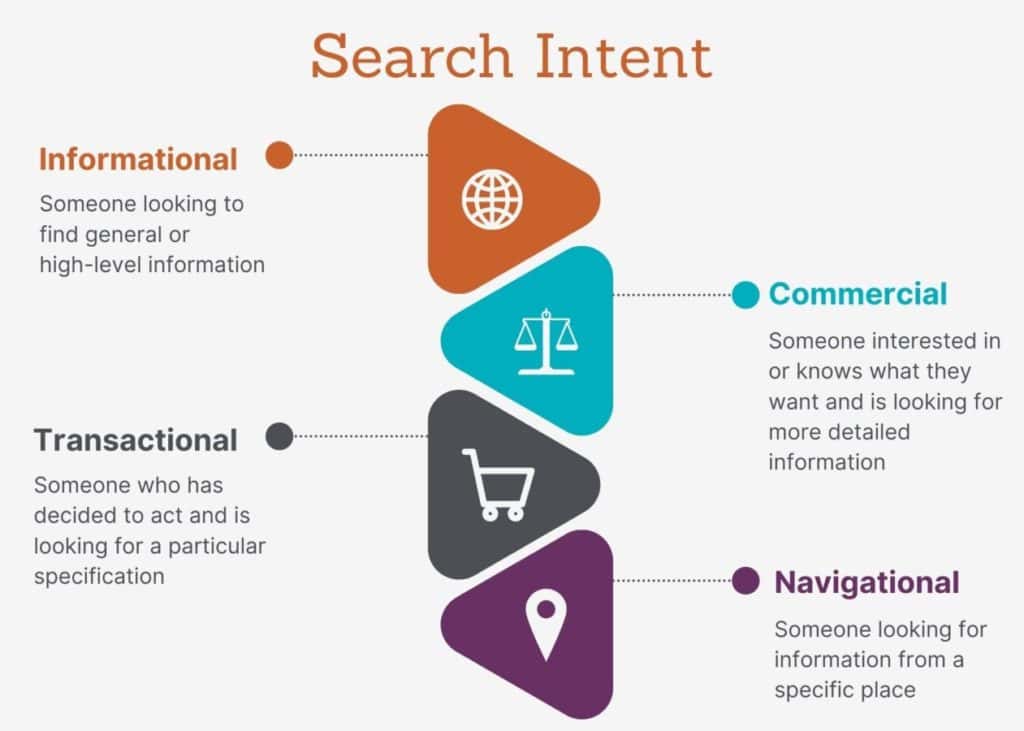
As for the next steps, here’s what you should do to further determine search intent: Classify your analysis into 3 parts.
- Top of the funnel: This has low intent and this is when users only want to know the basics or the definition of a topic.
- Middle of the funnel: This is when people want to know more about a topic to help them arrive at an informed decision before buying.
- Bottom of the funnel: This has high intent and is when users know what they want and are looking for a solution now. Essentially, they’re in the buying phase already.
You can determine which part of the funnel a user is in based on the context of the search terms they’re searching for. Here are some examples:
- Low intent search terms: How to start SEO, what are backlinks, SEO mistakes.
- Middle intent search terms: SEO execution guide, cost of SEO.
- High-intent search terms: Best SEO agencies, hire SEO agency
Another valuable technique is to check the top 10 Google Search results, click on each page, and read to identify intent. This is because sometimes a search term alone doesn’t reveal the search intent, but Google’s got your back. It ranks the pages that best satisfy the searcher’s intent.
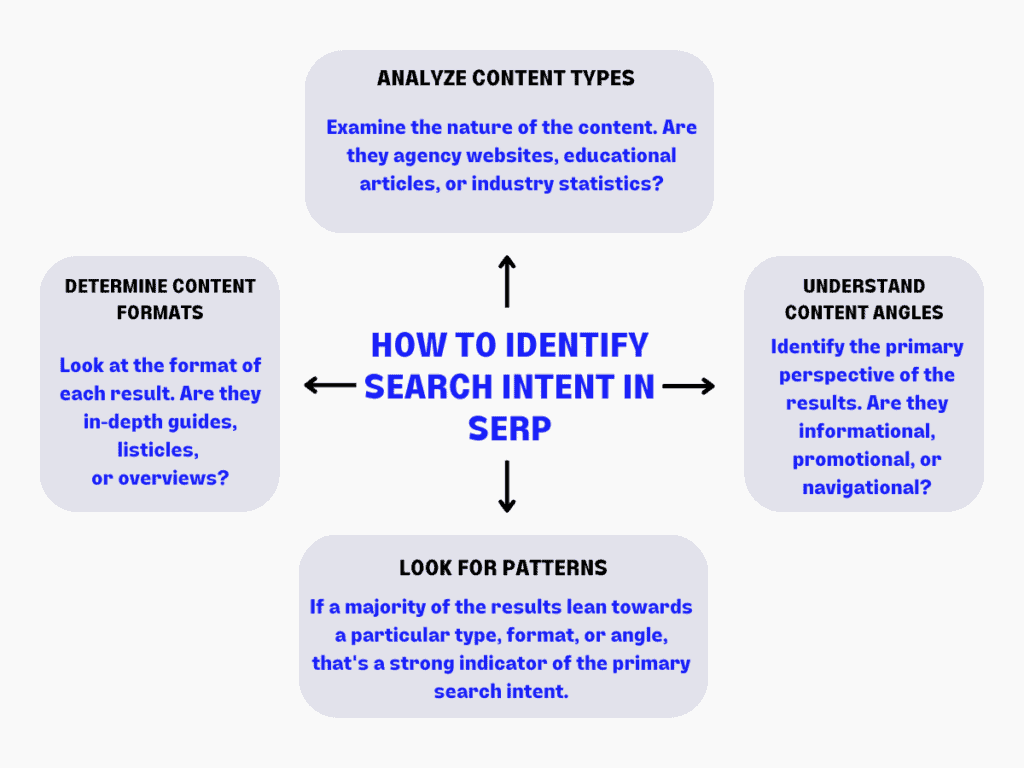
Here’s an example: Your search term is “digital marketing” and upon analyzing the top 10 SERP results, you find:
- One is a Wikipedia page providing an overview of digital marketing.
- One is a news article discussing the latest trends in digital marketing.
- Eight are educational articles and in-depth guides explaining what digital marketing is and its importance.
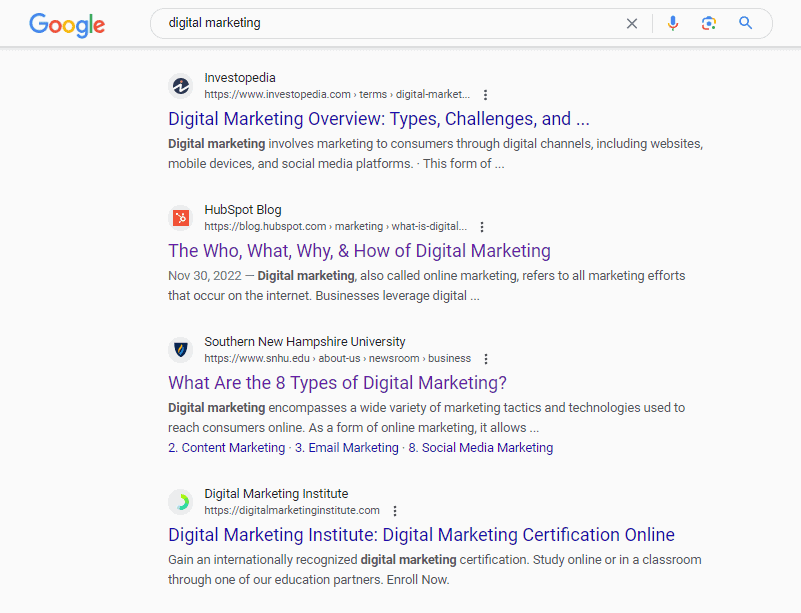
From this, the search intent can be identified as mostly informational (understanding digital marketing and its trends) with some transactional (seeking services).
Thus, we can infer that users searching for “digital marketing” are primarily looking to understand the concept, its importance, and the latest trends.
These approaches give you a deeper understanding of search intent and tailor your content strategy accordingly.
1.1.3 Conduct competitor analysis
To know what search terms your competitors are targeting, take a look at their online presence. Start by examining their website content, including page titles, headings, and meta descriptions.
In addition, pay attention to recurring search terms and phrases they prioritize. You can also analyze their online ads to determine the terms they target in their ad copy.
Tools like Ahrefs and SEMrush have features for competitor analysis. To help you leverage them, here’s a video tutorial on how to use Ahrefs’ platform:
These SEO tools also allow you to track your competitor’s growth. That means you get a sneak peek that helps you estimate how long it might take to catch up or even outshine their online presence.
Lastly, stay updated with industry news and trends to observe how your competitors adapt their content and search term strategies.
1.2. Techniques For Selecting The Right Search Terms
Nailing your search term strategy involves being smart and strategic about it to guarantee maximum visibility and relevance.
So, where should you and your SEO team start?
Understand your local audience. Market research plays a vital role in learning about their preferences and the terms they commonly use. This knowledge allows you to align your content with their expectations and establish a strong connection.
Moreover, you should leverage tools to conduct search term research, including:
| Tools | Function |
| Serpstat | Lets you identify region-specific keywords and understand the keyword strategy of local competitors. |
| SEMrush | Its Market Explorer feature can identify top players and market trends in a specific country, aiding in crafting a localized SEO strategy. |
| Google Search Console | Lets you filter data by country, so you can see which terms are driving traffic from specific regions. |
| Ahrefs Keyword Explorer | Its “Clicks” metric helps you understand user intent in different countries, ensuring they target terms that not only have search volume but also lead to user engagement. |
| Google Keyword Planner | You can set the tool to specific countries and languages, obtaining keyword suggestions and search volume data tailored to your target regions. |
It’ll provide you with invaluable data on search volume, competition, and related search terms. Plus, these tools let you discover search terms with high search volume that resonate with your audience.
For example, the screenshot below shows an example of search volume data for the search term “iphone” using Ahrefs. The search volume indicates that users enter this specific search term into search engines approximately 886K times on average per month. Targeting this term, you can potentially get 762k traffic monthly.
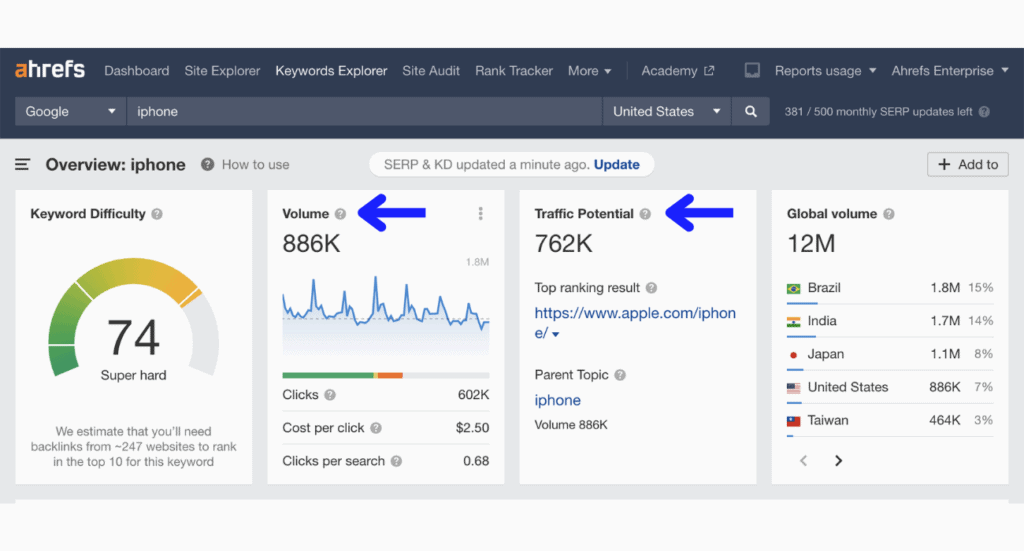
Having this data will help you strike a balance when choosing search terms. For instance, broad terms with higher search volume can attract a larger audience.
Although, a high search volume depends on your industry and goals. It could be 1,000 or 100,000 searches per month. However, many websites opt for a combination of low (30-100) and medium-volume (101-1,000) search terms. Just remember that the figures will vary depending on your niche.
Contrary to broad terms, specific long-tail search terms capture the native audience’s intent more precisely. Incorporating a mix of both broad and specific search terms in your SEO strategy lets you maximize visibility and attract relevant traffic.
Monitor search term rankings and adjust your strategy accordingly. Keep in mind that search behavior can differ across regions, so consider regional search engines as well.
However, remember that search term selection is an ongoing process. Stay proactive, adapt to changing search trends, and refine your search terms as your target markets evolve.
Selecting the right search terms lays a strong foundation for international SEO success, capturing the attention of your local audience and driving impactful results.
2. Technical Considerations When Implementing An International SEO Strategy
Website structure and hreflang tags play a pivotal role in signaling search engines about your targeted countries and languages.
So let’s break those factors down and see how implementing technical optimizations creates a user-friendly experience that aligns with your international audience’s preferences.
2.1. Website Structure
Implementing a hierarchical structure, which is arranging your content in a tree-like manner, lets search engines grasp the interconnection between your website pages.
What does that result in?
It ensures that your content is effectively crawled and indexed by search engine bots. The image below shows a good example of a simple, hierarchical website structure. It starts with the homepage, then the main categories, and followed by the subcategories.

Additionally, optimizing your website structure is crucial for user experience. A well-structured website ensures that your users easily navigate and find the information they’re looking for.
Here’s how you can optimize your website structure:
- Internal Linking: Link related internal pages together to keep users engaged and distribute page authority.
- Logical Hierarchy: Categorize your website pages into logical sections that reflect the hierarchy and flow of information. This begins with the homepage, followed by main category pages, and then individual subpages or articles.
- Mobile Optimization: Have a responsive design to make sure that menus and buttons are easily clickable on touchscreens.
- Breadcrumb Navigation: Implement breadcrumb navigation to give users a clear path back to the homepage or main categories and help search engines understand the site’s structure.
- Avoid Duplicate Content: If there are multiple pages with similar content, consider merging them or using canonical tags.
- Implement 301 Redirects: If you change the URL of a page or remove it, use 301 redirects to guide users and search engines to the new location or a relevant alternative.
2.2. URL Optimizations
When optimizing your URL structure for international SEO, make it concise, descriptive and incorporate relevant search terms. Lengthy and convoluted URLs can be confusing for both users and search engines.
To enhance your international SEO efforts, use country-specific top-level domains (ccTLDs) or subdirectories/subdomains with appropriate hreflang annotations. This helps search engines identify and serve the right content to your users based on their location and language preferences.
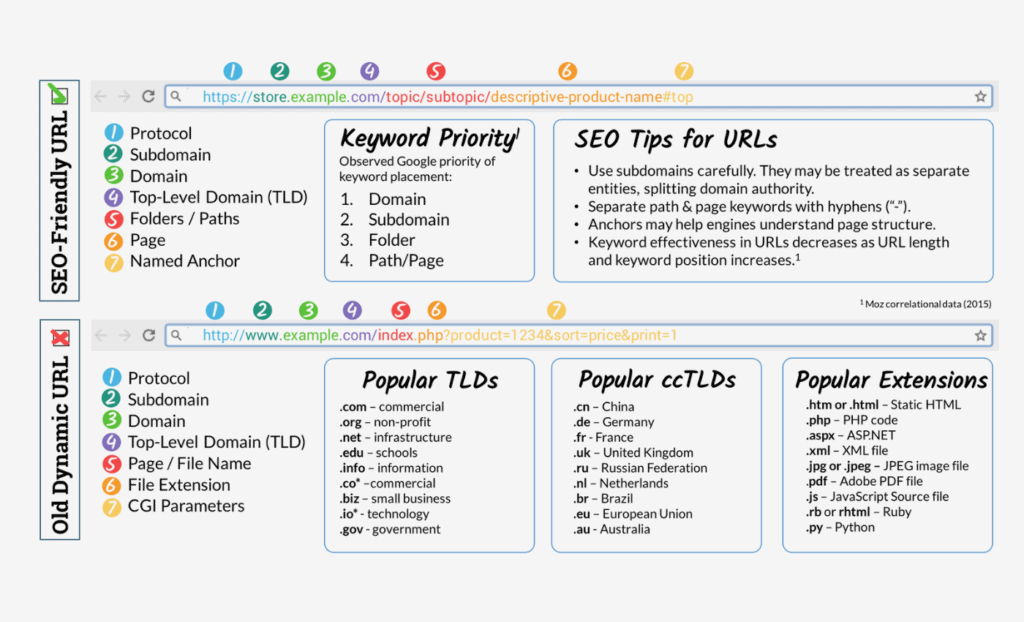
Say you’re targeting multiple countries like Germany, Japan, and France, instead of using a generic URL like “yourwebsite.com/products,” create dedicated URLs that reflect the local language and market of each target country. Here’s what you can do:
- For Japan: yourwebsite.jp/製品
- For France: yourwebsite.fr/produits
- For Germany: yourwebsite.de/produkte
This doesn’t only improve the user experience but also sends strong SEO signals, indicating that your website is specifically tailored to meet the needs of users in a particular country.
2.3. Hreflang Tags & Language Targeting
In international SEO, hreflang tags play a crucial role in making sure that search engines understand the language and regional targeting of your content. These tags also help eliminate duplicate content issues and guide users to the most relevant version of your website based on their location and language preferences.
So, how do you do this? Consider the following:
2.3.1 Country Targeting
If your website targets specific countries with different languages, use hreflang tags to specify both the language and country for each version. Here are some examples:
For the French version targeting users in France:
- <link rel=”alternate” href=”https://www.example.com/fr-fr” hreflang=”fr-FR” />
For the Spanish version targeting users in Spain:
- <link rel=”alternate” href=”https://www.example.com/es-es” hreflang=”es-ES” />
In these examples, the hreflang tags specify that the Spanish version of the website is intended for users in Spain (es-ES), while the French version is intended for users in France (fr-FR).
2.3.2 Language Targeting
For websites targeting various languages, use hreflang tags to indicate the language spoken on each page. This ensures that users conducting Google searches in their preferred language are presented with the most relevant content.
Here are some examples if you have your content in different languages:
- English: <link rel=”alternate” href=”https://yourwebsite.com/” hreflang=”en” />
- French: <link rel=”alternate” href=”https://yourwebsite.com/fr/” hreflang=”fr” />
- Spanish: <link rel=”alternate” href=”https://yourwebsite.com/es/” hreflang=”es” />
In the above examples, the hreflang tags indicate the language for each version of your content. This helps search engines understand the language targeting and deliver the most relevant content to users doing Google searches in their preferred language.
2.3.3 Same Language, Different Countries
If you have multiple versions of your website in the same language but targeted at different countries, use hreflang tags to specify the language and the country you’re targeting. This helps search engines direct users to the appropriate regional version.
Here are some examples:
- UK version: <link rel=”alternate” href=”https://yourwebsite.com/uk/” hreflang=”en-GB” />
- USA version: <link rel=”alternate” href=”https://yourwebsite.com/us/” hreflang=”en-US” />
In the above example, the hreflang tags specify the language and specific country you’re targeting for each version of your website. The UK and USA share the same native language but the currency and some of the spellings are different.
3. Content Localization
To effectively engage with international audiences, content localization adapts your content to resonate with the target audience in their language and cultural context, establishing trust and relevance.
So, how do you do this?
3.1. Understand Content Localization
Effectively connecting with your intended audience in different countries means adapting your content to resonate with their cultural nuances, preferences, and languages. This involves considering local idioms, customs, and humor to create a more authentic and relatable experience.
For example, if you’re targeting an audience in the United States, you might use phrases like “hitting a home run” or references to popular American TV shows.
On the other hand, when targeting the audience in the United Kingdom, you can include British slang or references to British cultural icons like afternoon tea or the Beatles.
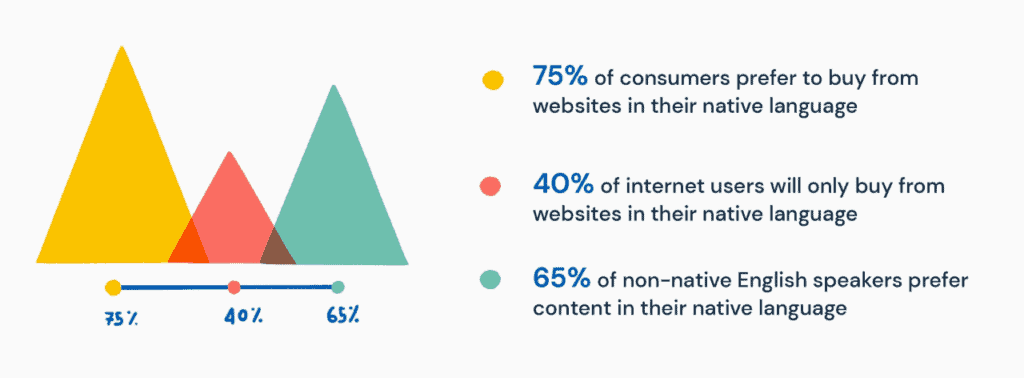
Moreover, implementing content localization as part of your international content strategy lets you utilize local SEO when optimizing your website and targeting valuable search terms in the target language.
Don’t forget to be consistent. Your brand identity and message should stay the same no matter how many countries you’re targeting or how many languages you’re using. Otherwise, your overall branding won’t have a strong foundation and you decrease the chances of imprinting your brand to your audience if you’re all over the place.
Strike the right balance between maintaining your brand identity and tailoring your content to the native audience.
3.2. Methods Of Content Localization
When it comes to winning over the hearts and minds of your global audience, translation is the most common approach, ensuring that your content is accurately conveyed in the target language while maintaining its essence.
Although, transcreation takes it a step further. It’s the process of adapting your content creatively to resonate with the emotional and cultural nuances of the target market. It matches the preferences, customs, and norms of the specific audience.

Use visuals that reflect the local customs, traditions, and lifestyles to create a more immersive and relatable experience. You can also include examples, case studies, and references relevant to the target country.
This helps demonstrate your understanding of the local market or specific country to build your brand’s credibility. Using local currency and the preferred presentation of dates, measurements, and units also helps users understand and relate to the content more easily.
3.3. Creating High-Quality Localized Content
Did you know that the average time users spend on a webpage is just 54 seconds? That’s your only window to WOW them.
That’s why you need to prioritize quality and relevance. But how do you do that?
Collaborate with professional translators or localization experts. They’ll help your content and SEO team maintain accuracy, linguistic fluency, and cultural sensitivity in your content.
Furthermore, thorough research on the local market is needed. This includes studying their demographics, values, and preferences. Knowing all that allows your company to develop content that truly resonates with your target audience.
Focus on creating engaging and informative content that aligns with the country’s official language and cultural nuances. It’ll enhance user experience and drive meaningful engagement with your brand.
One reminder:
Don’t underestimate the power of language preferences. Some countries have a dominant language, while others have multiple languages spoken within their borders. For instance, Quebec has French as its dominant language, while other cities in Canada prefer English.
Adapting your content to suit these language preferences demonstrates a genuine effort to connect with your audience on a deeper level.
With that, you’ll position your company as a trusted and relevant resource for different countries. Hence, driving conversions in foreign language markets.
4. International Link-Building
Last, but not least, we’ll cover why link-building is important, how to approach international link-building, and what strategies you should employ.
4.1. Importance Of Link-Building
Acquiring high-quality backlinks from reputable websites in the target market helps enhance your website’s visibility. When these big players link back to your site, it’s like a spotlight shining on your content.
So, how do you identify which backlinks are high-quality? Here’s how:
- Examine the relevance of those websites.
- See if those websites are receiving plenty of organic traffic.
- Check their domain authority, trustworthiness, and credibility.
- Make sure that the backlinks are embedded within relevant, informative, and contextual content.
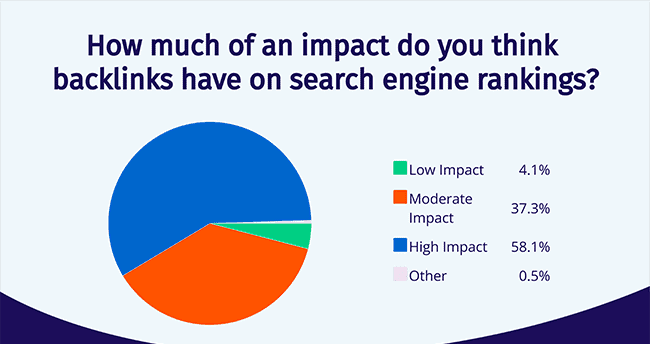
Additionally, implementing an effective link-building strategy, based on industry best practices, will strengthen your website’s authority and credibility. To do this, partner up with an experienced international SEO agency to help you navigate the complexities of link-building and maximize your efforts worldwide.
4.2. How To Approach International Link-building
Unlike targeting one market with a single preferred search engine and one main language, your website’s globalization is different.
Each country boasts its unique search engines, directories, and online platforms, greatly influencing its respective link ecosystems. That’s why thorough research and comprehension of these regional distinctions are pivotal in identifying the most effective link-building opportunities in a different country.
To give you an idea, let’s talk about the different search engines in other countries. China has Baidu, Russia has Yandex, and Korea has Naver, all of them hold a significant market share than Google in those countries.
So, understanding the preferences and algorithms of these search engines will tailor your international SEO approach for link-building accordingly. But it doesn’t end with these other search engines.
Different countries often have their local directories and platforms that hold significant importance. For example, in France, the Pages Jaunes directory is widely utilized, while Yelp is a prominent platform in the United States. Tapping into these regional directories will help you acquire valuable local links to boost your SEO strategy in the respective markets.
4.3. Effective Strategies For International Link Building
To build a strong international link profile, apply these strategies:
- Engage in guest blogging on reputable websites within your target market.
- Participate in industry-specific forums and discussions to establish your expertise.
- Collaborate with industry experts, local influencers, and bloggers to earn relevant backlinks.
- Implement outreach campaigns to connect with webmasters and acquire backlinks from authoritative websites.
Employing a well-rounded link-building strategy, combined with the approaches we discussed, helps improve your website’s authority and visibility in international search results.
With that, it’s time to give you a checklist to make your SEO efforts progress seamlessly.
International SEO Checklist For Success In 2023: Dominate The Global SERPs
To ensure you cover all the vital aspects of international SEO in 2023, we compiled a comprehensive checklist for your reference:
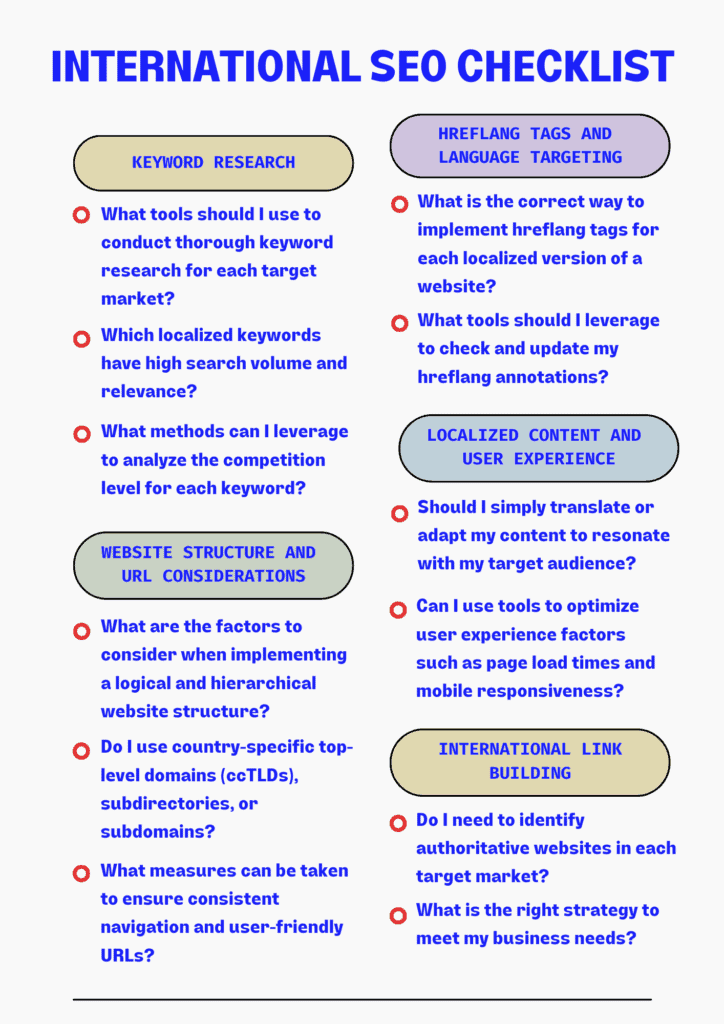
You should also remember the monitoring and analyzing aspect of an international SEO strategy. This includes:
- Analyzing user behavior and engagement metrics like conversion rates, bounce rates, and average session duration among other things.
- Monitoring your website’s performance in search engines using tools like Google Search Console.
- Tracking organic traffic, rankings, and conversions for each target market using Google Analytics. It gives you access to reports showing how your content is performing on Google Search worldwide.
6 Main Benefits Of Implementing International SEO Strategies
Implementing killer international SEO strategies means you’re not just dipping your toes into new markets, you’re diving headfirst into a pool of endless possibilities.
Why limit yourself to 1 country when there’s a whole world out there waiting for you?
Here’s what’s in it for you when deploying international SEO strategies:
- Expanded Global Reach
- Long-term Sustainability
- Increased Website Traffic
- Enhanced Brand Visibility
- Increased Revenue Potential
- Access to New Market Insights
International SEO lets you harness the influence of local search engines. This cultivates a robust digital presence in specific regions and establishes your brand as a formidable global player within your industry.
What’s Next?
With the ever-increasing global reach of businesses, tapping into the international market has become a necessity for growth and success. As a result, understanding international SEO and the distinct strategies associated with it is paramount in today’s globalized digital landscape.
However, it’s not going to be easy to conquer search engines worldwide. The underlying theme of international SEO is comprehensive research. Your company can’t just enter a market without going through the “getting to know” stage. That’s just failure waiting to happen.
There’s also a need for constant evaluation and refinement of your international SEO strategies to sustain your success in the world of search engines. Monitor performance metrics, including rankings, traffic, and conversions, and make data-driven adjustments as necessary.
So, with all of that, are you ready to leverage the reach and power of international SEO?
Well, Novum, you can do just that. With our 5-step approach, we can help drive your business toward an increase in organic growth and deliver a worthy ROI. Schedule a consultation now and be the next client of ours that achieves a 2,407% growth in organic sessions.
FAQs
a. How do I determine which countries to target?
Start by examining your website analytics to identify where your current traffic is coming from. If you’re seeing significant traffic from a specific country, that’s a good indicator of interest. Also, consider your business objectives and where your products or services are relevant.
b. What are some common pitfalls to avoid in international SEO?
- Poor Localization: Simply translating content without considering cultural nuances leads to misunderstandings or offense.
- Ignoring Local Competition: Don’t just focus on global competitors. Local businesses may be ranking higher in their home markets.
- Incorrect Hreflang Implementation: This can confuse search engines and result in poor rankings.
c. How do I choose the right domain?
Here are the options:
- ccTLDs (Country Code Top-Level Domains): These are country-specific domains like .fr for France. They’re great for targeting specific countries but require more resources to manage.
- Subdomains: These are part of a larger domain, like fr.example.com. They’re easier to manage but may not have the same geotargeting strength as ccTLDs.
- Subdirectories: These are folders on your main site, like example.com/fr. They’re the easiest to manage but may not provide strong geo-targeting signals.
d. How do I track & measure the success of my international SEO strategy?
- Monitor the number and quality of backlinks from local websites.
- High bounce rates could indicate that your content isn’t resonating with the local audience.
- Monitor the volume and quality of traffic coming from your targeted countries and languages. You can also use the tools mentioned before.
- Use SEO tools like Ahrefs, SEMrush, and WooRank to track your search term rankings in the different regions your site is active.
e. What’s the difference between website translation and website localization?
Website translation involves converting your website’s content from one language to another. It’s a direct language-to-language process, while the content remains the same.
On the contrary, website localization not only translates the content but also adapts it to fit the cultural and design preferences of a specific locale. This includes elements like currency, date formats, images, color schemes, and even humor or idioms.

